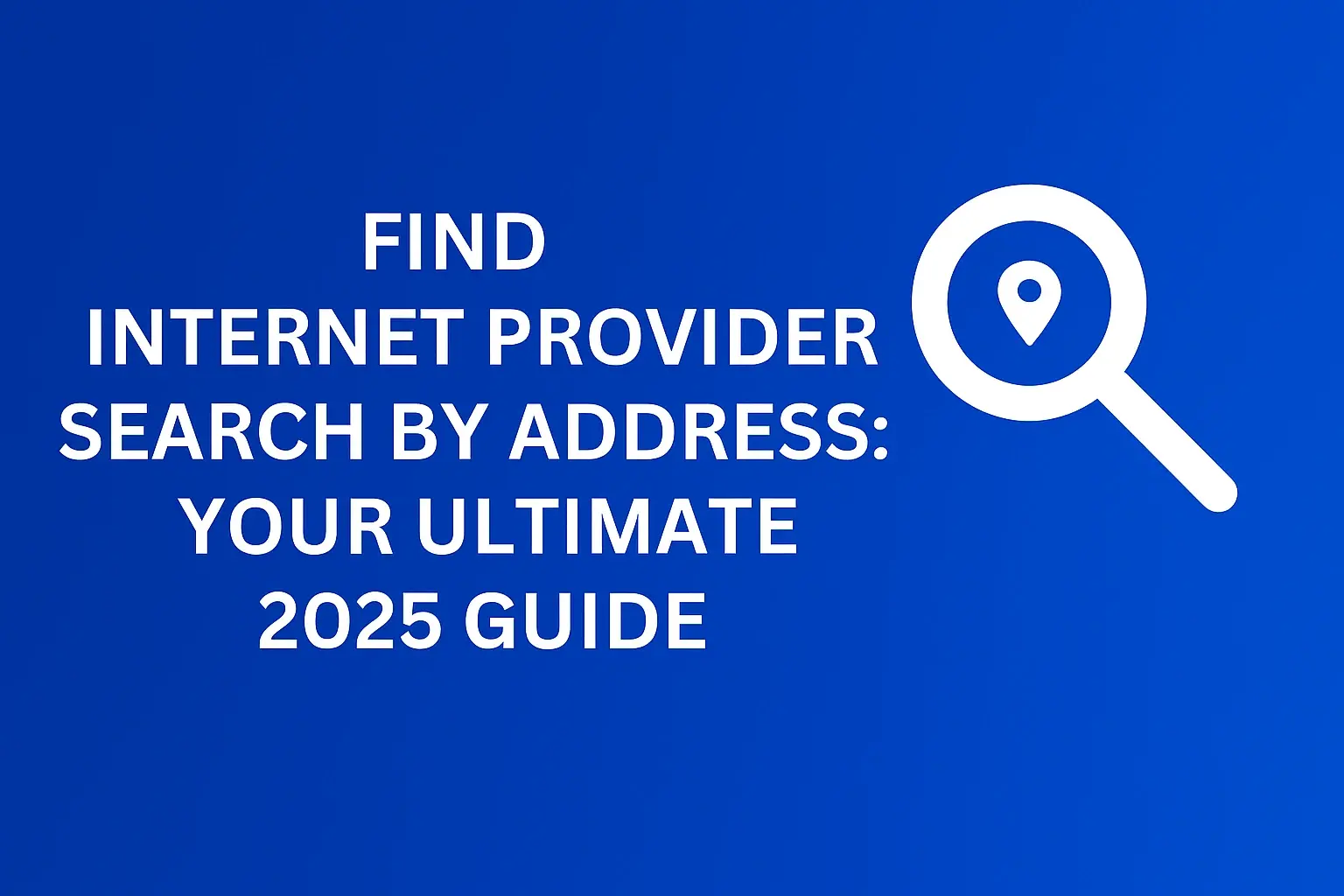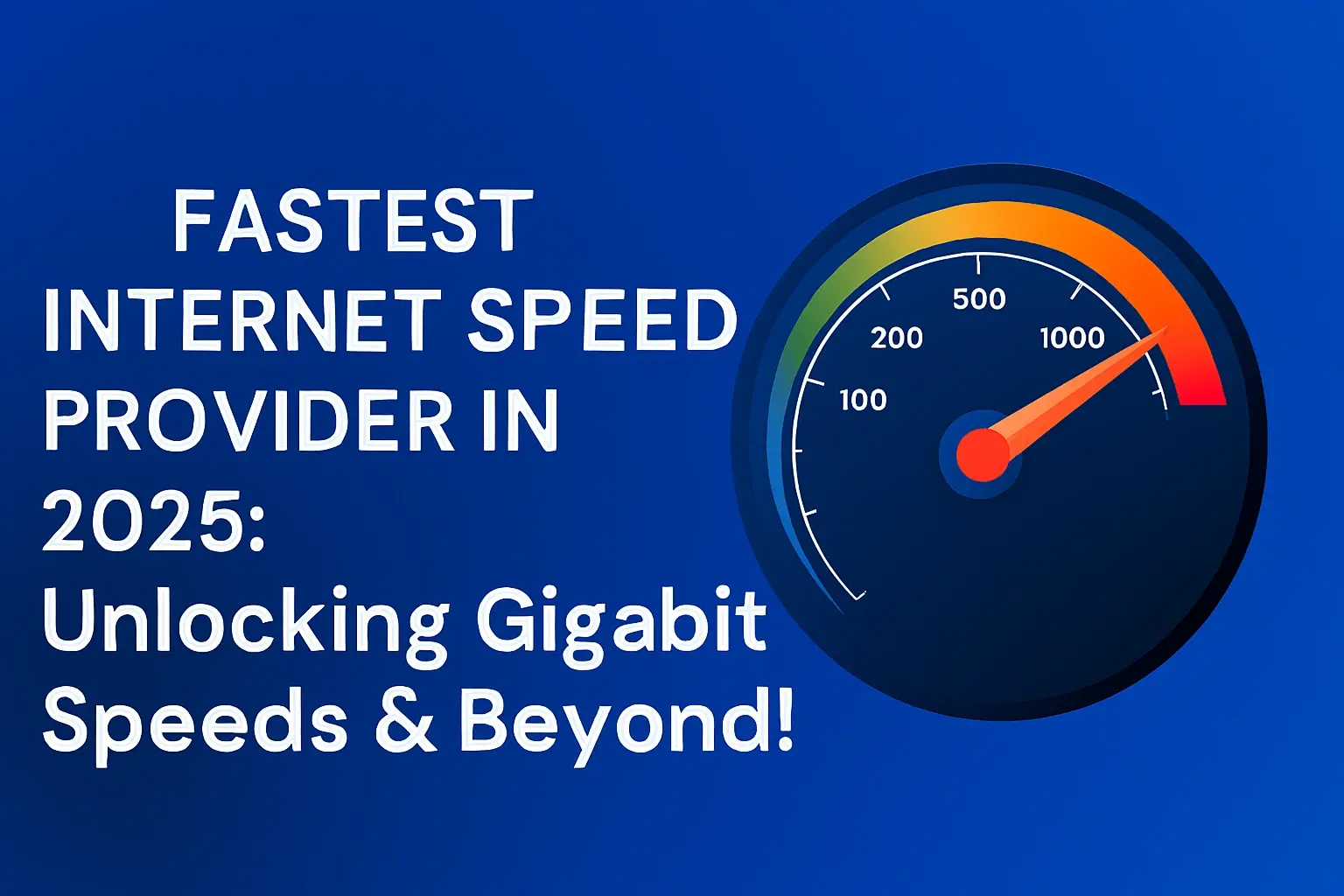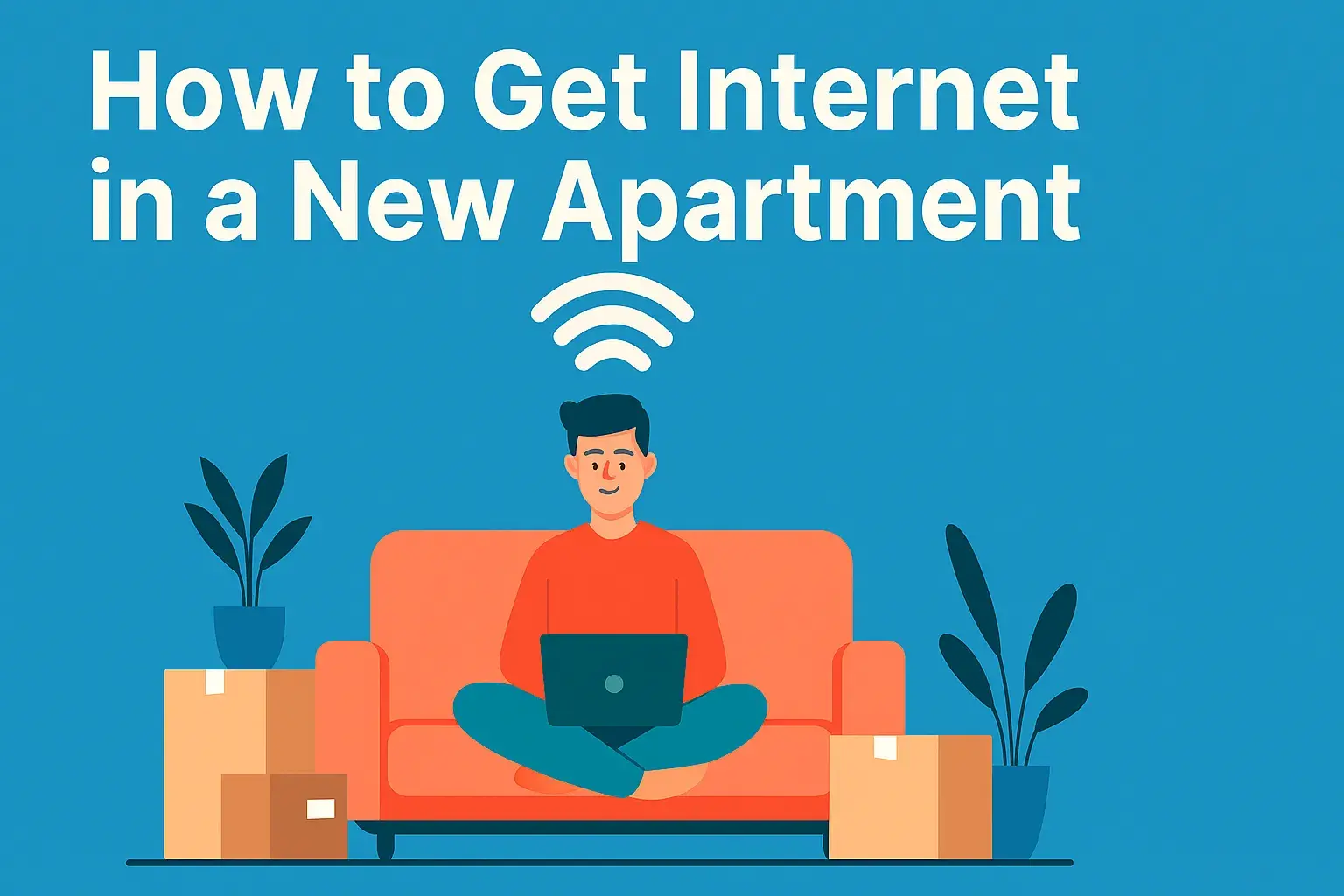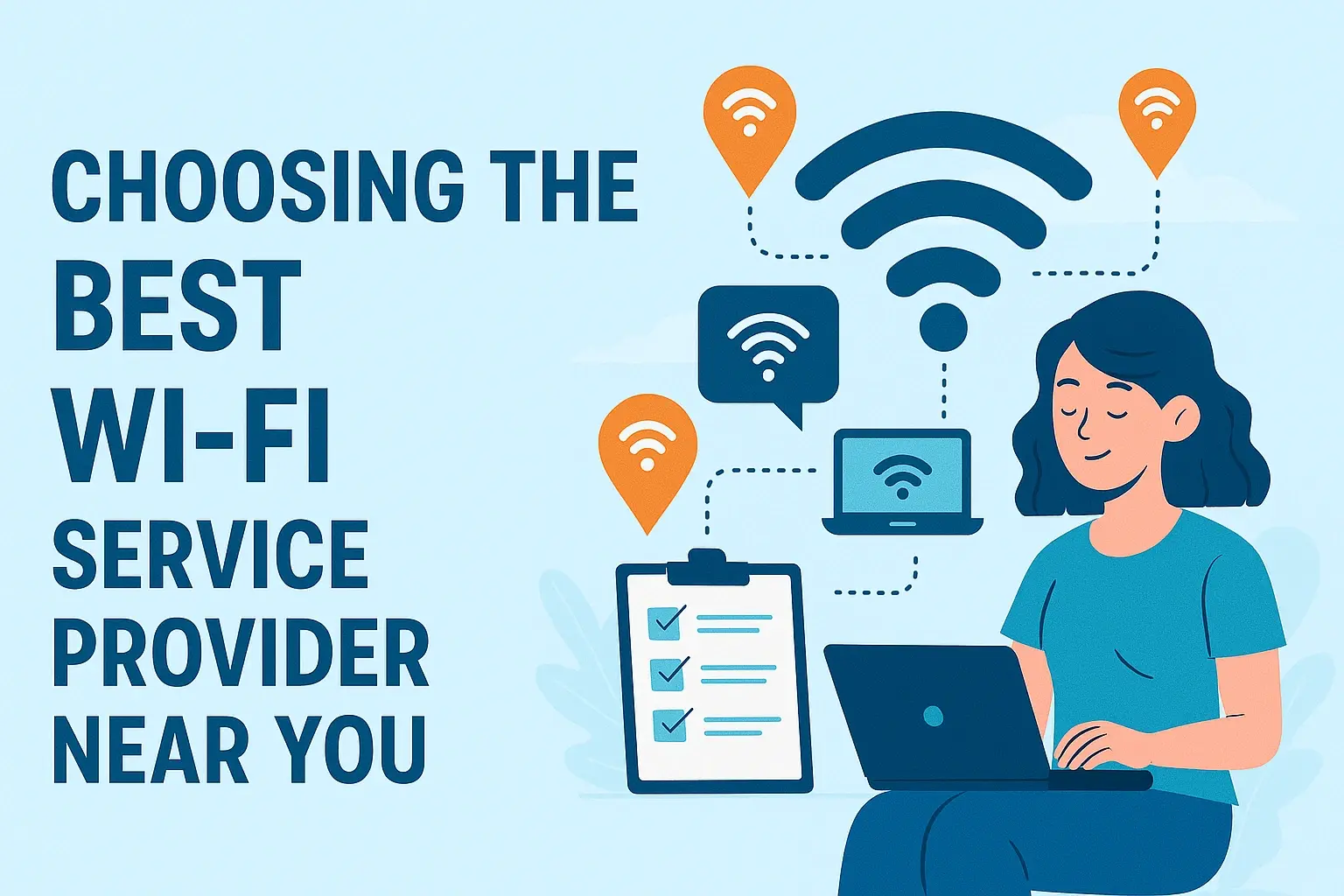Connect to Wi-Fi Without an Internet Provider Fast

Discover how to connect to Wi-Fi without a traditional internet provider, unlocking fast and reliable access. This guide explores innovative solutions for internet-less connectivity, ensuring you stay online when conventional services fail or are unavailable.
Understanding Internetless Wi-Fi: Beyond the ISP
The term "connect to Wi-Fi without an internet provider" might sound paradoxical at first. After all, Wi-Fi is a local area network technology that broadcasts a signal, but it needs a connection to the wider internet to be truly useful for most people. However, the user's intent behind this search is often about bypassing the limitations or costs associated with traditional Internet Service Providers (ISPs). This could mean seeking alternative ways to access the internet, establishing local networks without an external connection, or finding temporary solutions when a primary ISP is down. In 2025, the landscape of internet access is more diverse than ever, offering solutions that don't always rely on a cable or fiber optic line running directly into your home. We're talking about bridging the gap, finding connectivity where it's scarce, or creating your own network. This guide will delve into the various methods and technologies that allow you to achieve this, focusing on speed, reliability, and practicality.
The traditional model of internet access involves a subscription to an ISP, which then provides a modem and router to connect your home to their network and, subsequently, the global internet. This model is ubiquitous but comes with its own set of challenges: monthly fees, installation complexities, geographical limitations, and sometimes, inconsistent service. When someone searches to "connect to Wi-Fi without an internet provider fast," they are often looking for:
- Cost-effective alternatives: Ways to get online without the recurring monthly bills.
- Situational solutions: Methods for temporary internet access during outages, travel, or in remote locations.
- Local networking: Creating Wi-Fi networks for device-to-device communication without internet access.
- Faster deployment: Solutions that can be set up quickly without lengthy installation processes.
It's crucial to distinguish between creating a Wi-Fi network and connecting that network to the internet. You can easily set up a Wi-Fi network using a router or even a smartphone without an active internet subscription. Devices can connect to this local Wi-Fi for file sharing, printing, or gaming. However, the true challenge, and likely the core of the user's intent, is to gain internet access without a conventional ISP. This is where innovative technologies and clever workarounds come into play. In 2025, these solutions are more viable and performant than ever before.
The goal is not necessarily to eliminate the concept of an internet connection entirely, but to decouple it from the traditional ISP model. Think of it as finding alternative pipelines to the digital world. This might involve leveraging existing infrastructure in new ways, utilizing emerging technologies, or even forming collaborative networks. We'll explore these avenues in detail, providing actionable insights and practical advice for each. By understanding these options, individuals and businesses can make informed decisions to ensure they remain connected, regardless of their circumstances.
Leveraging Mobile Hotspots: Your Pocket-Sized Solution
One of the most immediate and accessible ways to connect to Wi-Fi without a traditional internet provider is by using a mobile hotspot. This technology essentially turns your smartphone or a dedicated mobile hotspot device into a portable Wi-Fi router. It leverages your cellular data plan to create a Wi-Fi network that other devices can connect to. For users seeking to "connect to Wi-Fi without an internet provider fast," mobile hotspots offer near-instantaneous setup and are readily available to anyone with a smartphone and a data plan.
How Mobile Hotspots Work
Your smartphone, equipped with cellular capabilities, can receive a mobile data signal from your carrier. When you enable the hotspot feature, your phone broadcasts this cellular data connection as a Wi-Fi signal. Other devices, such as laptops, tablets, or other smartphones, can then connect to this Wi-Fi network to access the internet. The speed and reliability of this connection are directly dependent on the cellular network coverage and data plan limitations in your area.
Smartphone Hotspots (Tethering)
Most modern smartphones (iOS and Android) have a built-in hotspot functionality. This is often referred to as "tethering."
- Enable Hotspot: Navigate to your phone's settings. Look for options like "Personal Hotspot" (iOS) or "Hotspot & Tethering" (Android).
- Configure Settings: You can usually set a network name (SSID) and a password for your hotspot to secure it.
- Connect Devices: On your other devices, search for available Wi-Fi networks. Your phone's hotspot should appear in the list. Select it and enter the password you set.
Pros:
- Convenient and readily available.
- No additional hardware required if you already own a smartphone.
- Quick to set up.
Cons:
- Can drain your phone's battery quickly.
- Data limits on your cellular plan can be a significant restriction. Exceeding these limits can result in throttling or extra charges.
- Performance can vary greatly depending on cellular signal strength and network congestion.
- May incur additional fees from your carrier for hotspot usage, depending on your plan.
Dedicated Mobile Hotspot Devices (MiFi)
These are standalone devices specifically designed to create a Wi-Fi hotspot using a cellular connection. They typically require a separate SIM card and data plan.
- Insert SIM Card: Install a SIM card with an active data plan into the device.
- Power On and Connect: Turn on the hotspot device. It will broadcast a Wi-Fi signal.
- Connect Devices: Connect your other devices to the Wi-Fi network broadcast by the hotspot, using the credentials provided with the device.
Pros:
- Dedicated device, so it doesn't drain your phone's battery.
- Often supports more simultaneous connections than a smartphone hotspot.
- Can sometimes offer better signal reception than a phone.
Cons:
- Requires purchasing a separate device.
- Requires a separate data plan, which can be costly.
- Still subject to cellular network limitations.
2025 Statistics and Considerations
In 2025, 5G technology is increasingly prevalent, offering significantly faster speeds and lower latency for mobile hotspots. However, the availability of 5G coverage is still a critical factor. Data plans remain the primary constraint. Many mobile carriers offer unlimited data plans, but these often come with caveats like data throttling after a certain usage threshold or prioritization of regular mobile data over hotspot data. As of 2025, the average cost of a dedicated mobile hotspot data plan can range from $30 to $100+ per month, depending on data allowances and speed.
For a user looking to "connect to Wi-Fi without an internet provider fast," a mobile hotspot is an excellent immediate solution, provided they have a strong cellular signal and a generous data plan. It's ideal for temporary needs, travel, or as a backup when primary internet fails. However, for consistent, heavy internet usage, it may not be the most cost-effective or reliable long-term solution due to data caps and potential throttling.
Satellite Internet Alternatives: Reaching Beyond the Grid
For those in remote or rural areas where traditional broadband infrastructure is unavailable, satellite internet offers a viable way to connect to the internet, effectively bypassing the need for a local ISP in the conventional sense. While it still requires a service provider, it's a fundamentally different technology that doesn't rely on ground-based cables. This is a crucial option for users looking to "connect to Wi-Fi without an internet provider fast" when other options are geographically impossible.
How Satellite Internet Works
Satellite internet works by using a satellite dish installed at your location to communicate with a geostationary or low-Earth orbit (LEO) satellite. This satellite then relays the data to a ground station, which is connected to the internet backbone. The process involves:
- Data Transmission: Your device sends a request through your router to the satellite dish.
- Uplink: The dish transmits this request as a radio signal to the satellite.
- Satellite Relay: The satellite receives the signal and beams it down to a ground station.
- Ground Station Connection: The ground station, connected to the internet, processes the request and sends the data back.
- Downlink: The ground station sends the data back up to the satellite.
- Dish Reception: The satellite relays the data back to your satellite dish.
- Router Distribution: Your router then distributes this internet connection via Wi-Fi to your devices.
Types of Satellite Internet
Geostationary (GEO) Satellite Internet
These satellites orbit the Earth at a very high altitude (approximately 22,000 miles), appearing stationary from the ground. This was the traditional form of satellite internet.
Pros:
- Wide coverage areas, reaching almost anywhere with a clear view of the sky.
- Can be a lifesaver in extremely remote locations.
Cons:
- High latency (delay) due to the vast distance the signal travels, making it unsuitable for real-time applications like online gaming or video conferencing.
- Often comes with strict data caps and can be expensive.
- Speeds can be slower compared to other broadband technologies.
Low-Earth Orbit (LEO) Satellite Internet (e.g., Starlink)
LEO satellite internet, exemplified by services like SpaceX's Starlink, uses a constellation of satellites orbiting much closer to Earth (a few hundred miles). This significantly reduces latency.
Pros:
- Much lower latency, making it suitable for a wider range of online activities.
- Potentially faster download and upload speeds.
- Expanding coverage and availability.
Cons:
- Requires a clear, unobstructed view of the sky, which can be an issue in heavily wooded areas or urban canyons.
- Initial hardware costs can be substantial.
- Service availability is still growing and can be limited in some regions.
- Data caps and prioritization policies may still apply, though often more generous than GEO.
2025 Statistics and Considerations
LEO satellite internet services have seen rapid growth and improvement. As of 2025, services like Starlink are offering average download speeds ranging from 50 Mbps to 200 Mbps, with latency as low as 20-40 ms. This is a dramatic improvement over GEO satellite internet, which typically offers speeds of 10-50 Mbps with latency exceeding 600 ms. The cost of hardware for LEO systems can range from $400 to $600, with monthly service fees typically between $90 and $120. GEO satellite internet costs are often similar for service, but hardware might be cheaper, and speeds are considerably lower.
For users needing to "connect to Wi-Fi without an internet provider fast" in areas lacking terrestrial broadband, LEO satellite internet is becoming the most practical and performant solution. It requires a clear sky view and an upfront investment, but it provides a robust internet connection where none existed before. It's a direct alternative to traditional ISPs, offering a different infrastructure entirely.
Mesh Networks and Community Wi-Fi: Sharing the Connection
Mesh networking and community Wi-Fi initiatives represent a decentralized approach to internet access. Instead of relying on a single point of connection from an ISP, these solutions involve multiple users or devices sharing and extending an existing internet connection. This can be particularly useful for extending Wi-Fi coverage within a large area or building, or for creating shared internet access points in a neighborhood. While not strictly "without an internet provider" in the sense of no internet at all, they allow users to connect to Wi-Fi without each individual needing their own direct ISP subscription.
Understanding Mesh Networks
A Wi-Fi mesh network consists of multiple nodes (routers) that work together to create a single, seamless Wi-Fi network. One node connects to the modem (which requires an ISP), and the other nodes wirelessly communicate with each other to extend the Wi-Fi signal throughout a larger area. Devices automatically connect to the strongest node as you move around.
Pros:
- Excellent Wi-Fi coverage over large areas.
- Seamless roaming between nodes.
- Easy to expand by adding more nodes.
Cons:
- Requires at least one primary internet connection from an ISP.
- Initial setup can be more complex than a single router.
- Performance can degrade with each "hop" between nodes.
This is less about bypassing an ISP entirely and more about optimizing and extending an existing connection. However, it can be part of a solution where one person has an ISP and shares it wirelessly with neighbors.
Community Wi-Fi Initiatives
Community Wi-Fi projects aim to provide shared internet access to a group of users, often within a neighborhood or apartment complex. This can take several forms:
- Shared ISP Connection: One or more individuals or a building management may subscribe to a high-speed internet plan and then share it wirelessly with others using routers or mesh systems.
- Public Wi-Fi Hotspots: Some municipalities or organizations offer free public Wi-Fi in parks, libraries, or public spaces. While not a private connection, it allows users to connect to the internet without their own ISP.
- Mesh-based Community Networks: These are more advanced initiatives where users contribute their internet bandwidth to create a larger, interconnected network. Devices on the network can access the internet through any node that has a connection.
Example: Neighborly Sharing
Imagine a scenario where a user has a robust internet connection. They could set up a powerful mesh Wi-Fi system and offer access to neighbors who might not have reliable internet or can't afford a subscription. The neighbors would connect to the shared Wi-Fi, effectively getting internet access without their own ISP. This requires trust and agreement on data usage and potential costs.
2025 Statistics and Considerations
The concept of community-driven internet access is gaining traction. Projects like "OpenWrt" and various open-source mesh networking software allow technically inclined individuals to set up their own shared networks. In 2025, the emphasis is on leveraging existing infrastructure more efficiently. For instance, many apartment buildings now offer building-wide Wi-Fi as an amenity, powered by a single, high-capacity ISP connection. The challenge with community Wi-Fi is often governance, fair usage policies, and ensuring adequate bandwidth for all users. For someone looking to "connect to Wi-Fi without an internet provider fast," a neighbor's shared Wi-Fi or a community network could be a quick and potentially low-cost solution if available, but it relies on the cooperation of others.
While these solutions don't eliminate the need for an ISP at the network's core, they provide a pathway to Wi-Fi access without each individual household subscribing. They are particularly relevant in dense urban areas or for temporary shared living situations.
Fixed Wireless Access (FWA): A Powerful Alternative
Fixed Wireless Access (FWA) is a technology that provides wireless broadband internet to a fixed location, such as a home or business, without the need for traditional wired infrastructure like fiber optic or cable lines. It uses radio waves to connect a customer's premises to a nearby base station or tower. This is a significant alternative for users seeking to "connect to Wi-Fi without an internet provider fast" when wired options are unavailable or prohibitively expensive.
How Fixed Wireless Access Works
FWA systems typically involve:
- Base Station: A tower or elevated structure equipped with antennas that broadcasts an internet signal.
- Customer Premises Equipment (CPE): An antenna or receiver installed at the customer's location, usually mounted on the roof or side of the building. This CPE receives the wireless signal.
- Indoor Router: The CPE is connected to an indoor router, which then distributes the internet connection via Wi-Fi throughout the home or office.
The connection between the base station and the CPE is a direct wireless link, bypassing the need for digging trenches or laying cables to the property.
Types of Fixed Wireless Access
Licensed Spectrum FWA
This type of FWA uses radio frequencies that are licensed by government regulators (like the FCC in the US) to specific providers. This ensures less interference and more reliable service.
Pros:
- Generally more reliable and less prone to interference.
- Often offers higher speeds and better performance.
Cons:
- Availability is limited to areas where providers have licensed spectrum.
- Can be more expensive due to the cost of spectrum licensing.
Unlicensed Spectrum FWA
This FWA operates in unlicensed radio frequency bands (e.g., 2.4 GHz and 5 GHz, similar to Wi-Fi). While more accessible, it can be more susceptible to interference from other devices using the same frequencies.
Pros:
- Lower deployment costs, making it more accessible for smaller providers or community networks.
- Wider availability in some areas.
Cons:
- More susceptible to interference, which can lead to slower speeds and dropped connections.
- Performance can be inconsistent, especially in densely populated areas.
5G FWA
The advent of 5G technology has significantly boosted the capabilities of FWA. 5G FWA leverages the high speeds and low latency of 5G networks to deliver broadband-like performance wirelessly.
Pros:
- Potentially very high speeds, comparable to fiber optic.
- Low latency, suitable for gaming and real-time applications.
- Can be deployed more quickly than fiber.
Cons:
- Requires 5G network coverage, which is still expanding.
- May require line-of-sight to the nearest 5G tower for optimal performance.
- Initial hardware costs can be significant.
2025 Statistics and Considerations
Fixed Wireless Access has emerged as a major competitor to traditional broadband, particularly in rural and underserved areas. As of 2025, 5G FWA is rapidly expanding, with major carriers actively deploying it as a home internet solution. Providers are reporting average download speeds for 5G FWA ranging from 100 Mbps to over 1 Gbps, with latency as low as 10-25 ms. This makes it a highly attractive option for users who previously had limited choices. The cost of 5G FWA service is often competitive with cable and DSL, typically ranging from $50 to $100 per month, with hardware costs varying but sometimes included in the plan.
For individuals looking to "connect to Wi-Fi without an internet provider fast," FWA is a compelling solution if it's available in their area. It offers a dedicated internet connection to a location without the need for physical cables, and 5G FWA provides speeds and performance that rival wired options. It's a true alternative to traditional ISPs, using a different delivery method.
Choosing the Right Solution for Your Needs
Selecting the best method to "connect to Wi-Fi without an internet provider fast" depends heavily on your specific circumstances, location, budget, and intended use. Each solution has its own set of advantages and disadvantages. A careful evaluation of these factors will guide you to the most effective option.
Factors to Consider
When evaluating your options, ask yourself the following questions:
- Location: Are you in a dense urban area, a rural setting, or a remote location? This will heavily influence the availability of certain technologies (e.g., mobile coverage, satellite line-of-sight, FWA towers).
- Speed Requirements: What do you primarily use the internet for? Basic browsing, streaming high-definition video, online gaming, or heavy file downloads will all have different bandwidth needs.
- Data Usage: How much data do you anticipate consuming? Mobile hotspots often have strict data caps, while satellite and FWA might offer more generous allowances or even unlimited plans.
- Budget: What is your monthly budget for internet service? Consider both upfront hardware costs and ongoing subscription fees.
- Reliability and Latency: How critical is a stable connection with low latency? For real-time applications, high latency from GEO satellite internet will be a dealbreaker.
- Portability: Do you need an internet connection that you can take with you, or is it for a fixed location?
- Installation Time: How quickly do you need to be online? Mobile hotspots are instant, while satellite or FWA might require professional installation.
Comparison of Solutions
Here's a comparative overview to help you decide:
| Solution | Best For | Pros | Cons | Typical Speed (2025) | Typical Latency (2025) | Monthly Cost (Est. 2025) | Upfront Cost (Est. 2025) |
|---|---|---|---|---|---|---|---|
| Mobile Hotspot (Smartphone) | Temporary needs, travel, backup | Instant setup, no extra hardware | Data caps, battery drain, limited connections | 10-100 Mbps (4G/5G dependent) | 30-100 ms | Included in phone plan (may incur overages/extra fees) | $0 (uses existing phone) |
| Dedicated Mobile Hotspot (MiFi) | Portable, reliable cellular internet | Dedicated device, better battery life | Requires separate device & data plan | 10-100 Mbps (4G/5G dependent) | 30-100 ms | $30 - $100+ | $50 - $200 |
| LEO Satellite Internet (e.g., Starlink) | Remote areas, no terrestrial broadband | Low latency, high speeds, wide coverage | Requires clear sky view, high upfront cost | 50-200 Mbps | 20-40 ms | $90 - $120 | $400 - $600 |
| GEO Satellite Internet | Extremely remote areas with no other options | Ubiquitous coverage | High latency, slow speeds, data caps | 10-50 Mbps | 600+ ms | $60 - $100 | $100 - $300 |
| Fixed Wireless Access (5G FWA) | Areas without wired broadband, good tower coverage | High speeds, low latency, competitive pricing | Requires tower proximity, line-of-sight | 100 Mbps - 1 Gbps+ | 10-25 ms | $50 - $100 | $0 - $300 (often subsidized) |
| Mesh/Community Wi-Fi | Extending coverage, sharing within groups | Cost-effective sharing, extended range | Relies on a primary ISP, requires coordination | Varies greatly | Varies greatly | Varies (can be very low if shared) | $50 - $300+ (for mesh system) |
Making the Decision
If you need to "connect to Wi-Fi without an internet provider fast" for immediate, temporary use, a mobile hotspot is your go-to. For consistent home internet in a rural area with no cable or DSL, LEO satellite or FWA are likely your best bets. If you're in a location with decent cellular coverage but no wired broadband, 5G FWA offers a compelling balance of speed, latency, and cost. Community Wi-Fi is more of a niche solution, dependent on local availability and cooperation.
Optimizing Your Internetless Wi-Fi Experience
Once you've chosen a method to connect to Wi-Fi without a traditional internet provider, optimizing your experience is key to ensuring speed, reliability, and satisfaction. Whether you're using a mobile hotspot, satellite internet, or FWA, several strategies can help you get the most out of your connection.
Tips for Mobile Hotspots
- Manage Data Usage: Be mindful of your data plan limits. Use Wi-Fi when available for large downloads or updates. Configure apps to download over Wi-Fi only.
- Optimize Signal Strength: Place your phone or hotspot device in an area with the strongest cellular signal. Higher elevations or near windows often provide better reception.
- Limit Connected Devices: Each device connected consumes bandwidth. Disconnect devices you're not actively using.
- Adjust Hotspot Settings: Some phones allow you to prioritize certain devices or set data limits for connected devices.
- Use a Dedicated Hotspot Device: If you frequently use your phone as a hotspot, consider a dedicated MiFi device. They often have better antennas and battery life.
Tips for Satellite Internet
- Ensure Clear Sky View: For LEO satellite internet, unobstructed views of the sky are crucial. Trim trees or relocate the dish if necessary.
- Proper Dish Alignment: The satellite dish must be precisely aligned to communicate effectively with the satellites. Professional installation is highly recommended.
- Minimize Interference: Keep the dish clear of snow, ice, or debris.
- Understand Latency: Be aware that even with LEO, there's still some latency. Avoid activities highly sensitive to delay, or adjust expectations.
- Optimize Network: Use a good quality router and consider a mesh system if you have a large home to ensure Wi-Fi coverage is consistent.
Tips for Fixed Wireless Access (FWA)
- Optimal CPE Placement: The FWA antenna (CPE) should be installed in a location with the best possible line-of-sight to the provider's base station.
- Secure Installation: Ensure the CPE is securely mounted to prevent signal degradation due to movement.
- Router Quality: Invest in a good Wi-Fi router to maximize the distribution of the FWA signal throughout your home.
- Monitor Speeds: Periodically test your internet speeds to ensure you're getting the performance you're paying for.
- Understand Network Congestion: While FWA is generally stable, performance can sometimes be affected by overall network congestion in your area, especially during peak hours.
General Optimization Strategies
Regardless of the method used, these general tips apply:
- Use Wired Connections When Possible: For devices that remain in one place (like desktop computers or gaming consoles), a wired Ethernet connection to your router will always be more stable and faster than Wi-Fi.
- Update Router Firmware: Ensure your router's firmware is up to date. Manufacturers regularly release updates to improve performance and security.
- Choose the Right Wi-Fi Band: Most modern routers broadcast on both 2.4 GHz and 5 GHz bands. The 5 GHz band offers faster speeds but has a shorter range, while 2.4 GHz has better range but is slower and more prone to interference. Connect devices that are close to the router to the 5 GHz band for better performance.
- Reduce Network Congestion: Limit the number of devices streaming or downloading simultaneously. Schedule large downloads for off-peak hours.
- Consider a Mesh Wi-Fi System: If you have a large home or multiple floors, a mesh system can significantly improve Wi-Fi coverage and eliminate dead spots.
- Secure Your Network: Always use a strong, unique password for your Wi-Fi network to prevent unauthorized access, which can slow down your connection.
By implementing these optimization strategies, you can enhance the performance and user experience of any internet connection you establish without a traditional ISP, ensuring you can "connect to Wi-Fi without an internet provider fast" and effectively.
Conclusion
Navigating the landscape of internet access in 2025 reveals a wealth of options beyond the conventional ISP model. The quest to "connect to Wi-Fi without an internet provider fast" is not about eliminating the internet, but about creatively and efficiently accessing it. Whether it's leveraging the ubiquitous nature of mobile networks via hotspots, reaching for the stars with satellite technology in remote locales, harnessing the power of shared bandwidth through community initiatives, or embracing the speed of fixed wireless access, the solutions are diverse and increasingly powerful.
Mobile hotspots offer immediate, portable connectivity, ideal for temporary needs or as a backup. For those off the beaten path, LEO satellite internet, like Starlink, is revolutionizing access with speeds and latencies that were once unimaginable. Fixed Wireless Access, especially with 5G, presents a robust, high-speed alternative for areas underserved by wired infrastructure. Community Wi-Fi and mesh networks highlight the potential for shared resources, making internet access more accessible and affordable through collaboration.
The key takeaway is that your connectivity options are no longer limited by the presence of a cable line. By understanding your location, data needs, budget, and desired performance, you can confidently select the method that best suits your situation. Optimizing your chosen solution through smart device management, signal enhancement, and network configuration will further ensure a fast and reliable Wi-Fi experience. Embrace these innovative pathways to stay connected, informed, and empowered in our increasingly digital world.





